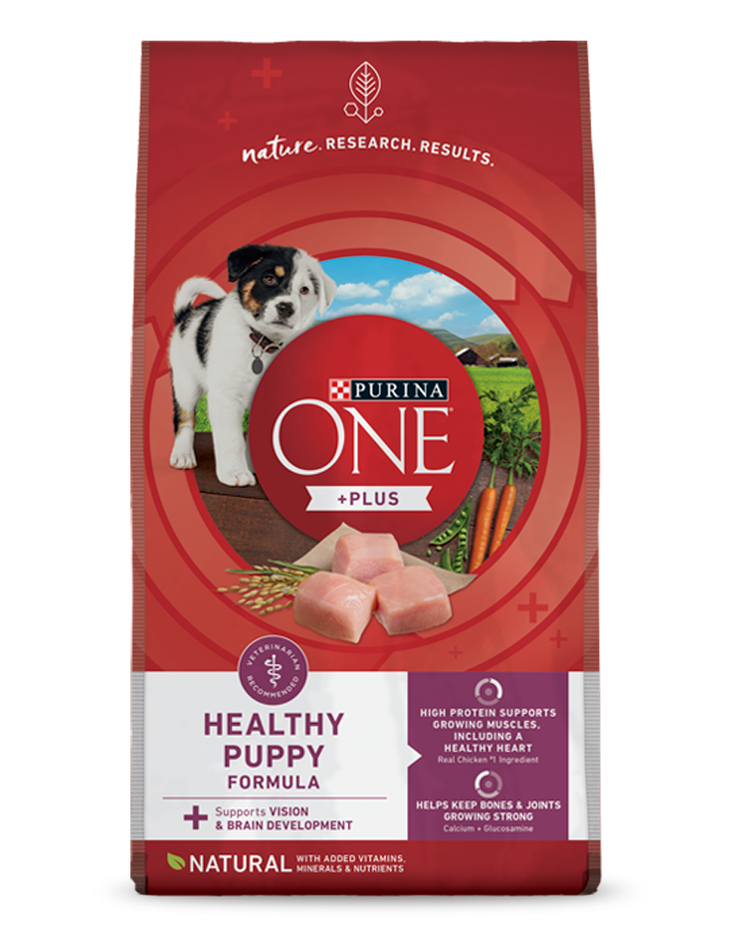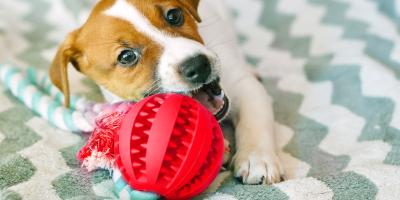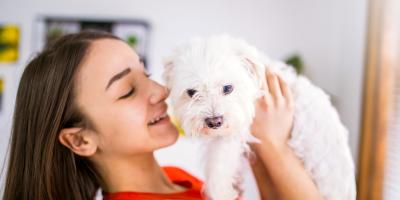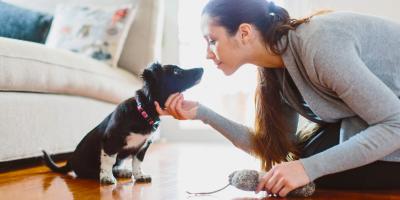Puppy Chewing: How to Stop Destructive Chewing

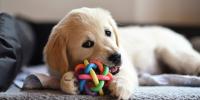
There are few more enjoyable and memorable times than when you bring a puppy home for the first time. While putting in the work to raise a happy and well-behaved adult dog is at times challenging, it pays off to rid them of some of their more undesirable habits.
Puppies are natural chewers, so knowing how to stop a puppy from chewing everything in sight should be a priority. Show your puppy it’s okay to chew on age-appropriate toys, chewable treats and food items to start. Steering them away from shoes, furniture and anything else they can sink their needle-sharp teeth into will teach them their new home isn’t just one big chew toy, which can make everyone’s life a whole lot easier.
Why Puppies Chew
Puppies are endlessly curious and want to explore the exciting new world around them. Puppy’s noses and mouths play a crucial part in helping them navigate their way through the world and discover what’s what.
So, when your puppy comes upon an intriguing object they’ve never seen before, they’re likely to pick it up, mouth it and even chew on it—especially if it smells interesting.
Curiosity isn’t the only reason why dogs chew, however. When your puppy’s new teeth begin to grow in (between three and six months of age), it can cause discomfort, which they relieve by chewing. Teething involves lots of chewing until their new teeth have fully grown in. During this time, puppies are content to grab just about anything they can fit into their mouths. Other reasons why puppies chew can include:
- To release pent-up energy
- Boredom
- To de-stress
- Separation anxiety (especially if your puppy only chews while they’re alone and it’s near boundaries)
- It’s fun
How to Stop Destructive Puppy Chewing
Chewing is a healthy dog behavior that helps keep their teeth clean and offers mental and physical stimulation. If you want to know how to stop puppy chewing, or more accurately, redirect them towards things that are acceptable to chew on, the first thing to do is ensure your puppy’s environment has been puppy-proofed.
How to Puppy Proof Your Home
Puppy proofing your home requires moving hazardous items out of reach. The same goes for any valuables you don’t want left with tiny teeth marks.
Items you should move to a safe place include:
- Electrical cords
- Medications
- Cleaning supplies
- Plants
- Shoes
- Clothing
- Trash cans
- Choking hazards like LEGO® bricks, beads and other small items
Offer Your Puppy Things They’re Allowed to Chew
In the absence of any potentially hazardous or valuable items you don’t want your puppy to chew on, they’ll naturally gravitate toward their toys and other age-appropriate treats, such as dental treats. Any time they end up with something in their mouth they shouldn’t be chewing on, remove it with a firm “No!” and then replace it with a toy.
Put Up Puppy Gates
Puppies are rambunctious and can go scampering off before you know it. A big part of stopping your puppy from engaging in destructive behavior is keeping them in a contained and safe area where you can monitor them, and they’re not tempted to chew on something they shouldn’t.
Use a Puppy Crate
When you’re not around to supervise your puppy, putting them in a puppy crate can give them a small, cozy and confined space where they can feel safe and not get into mischief. If you’re heading out of the house for a few minutes or won’t be able to keep a close eye on your puppy, putting them in their crate with some chew toys is an excellent option.
Give Your Puppy Plenty of Mental and Physical Stimulation
Puppies are whirling dervishes of energy with endless amounts of curiosity. If you don’t provide your puppy with a healthy outlet for these things, destructive behaviors can become a problem. That’s why it’s essential to keep your puppy engaged by helping them burn off their energy and engaging them in plenty of puppy playtime activities like fetch, tug of war, hide and seek or to keep them mentally engaged in puppy enrichment activities.
Tips for Correcting Problem Chewing
- Buy age- and size-appropriate chew toys.
- Say “No!” in a firm, low voice when you see your puppy chewing on something they shouldn’t.
- If your puppy stops to look at you, praise them calmly and give them their preferred chew toy.
- Do not use old shoes, socks or gloves as toys, as this will train your puppy to chew your things.
- Keep things out of reach that you don’t want your dog chewing on.
- Praise your puppy whenever you see them chewing on a puppy toy. This teaches them that it’s not chewing that is wrong, but chewing on the wrong things.
- Rotate chew toys to provide novelty.
- Confine your puppy in a safe area, or crate your puppy when you aren’t home or just can’t keep a close eye on them.
- Make sure your puppy is getting plenty of exercise.
- Reward and praise your puppy for chewing the right things, but don’t yell at them for chewing the wrong thing.
Remember, it’s far easier to teach a puppy what to chew on and what not to chew on than it is to figure out how to stop a dog from chewing on everything when they’re an adult, so start early.
For more helpful training insights, check out the myPurina app.
Get more about puppy and dog ownership advice from our experts on our Pet Expertise page.
For your own personalized dog training plan, download Zigzag, the most advanced dog training app, for free and unlock 1 month of Premium Access with unlimited lessons, tailored guidance, and 24/7 expert support using code PUR30 at payment.
Install Zigzag for free now to get started

Be Rewarded for Your Purina Purchases
Earn and redeem points for Purina products with myPurina app.


